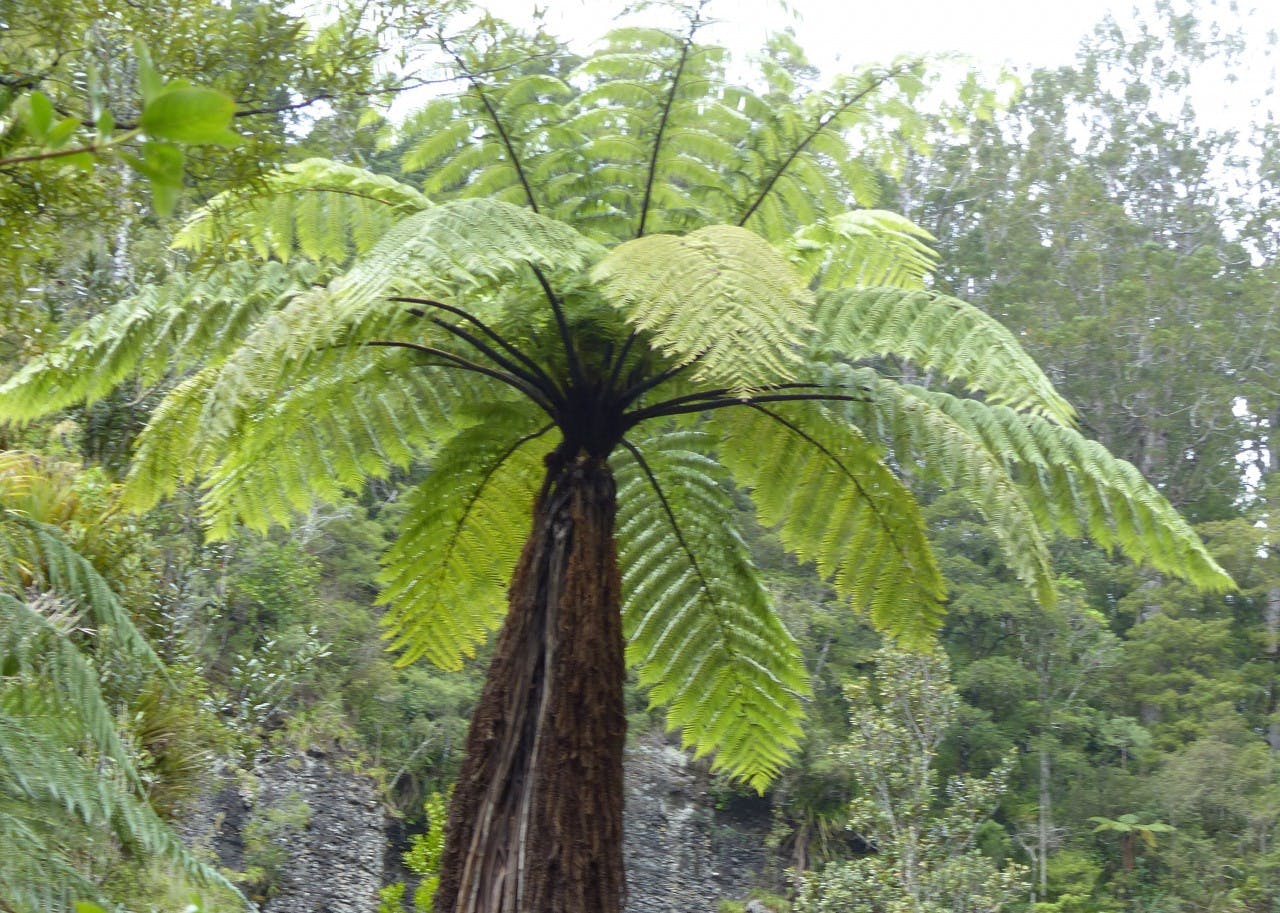Riki Bennett explains the culinary and medicinal benefits of the mamaku fern
New Zealand’s tallest tree fern is not to be mistaken for the ponga or silver. As the old fronds die off to make way for the new emerging fronds, they are often seen draping around the trunk.
Maori have long referred to the mamaku as originally being a woman, but because of constant quarrelling with her husband Toroa, and the refuted warnings to stop by the Patupaiarehi (ancient fairy people), as it disturbed the peacefulness of the forest environment, she was turned into the mamaku tree fern, to stand silently.
The dead fronds drooping from her body are likened to her hair hanging in sadness because of this outcome.
Her husband Toroa was sent to roam the sea in the form of an albatross.
The mamaku can be a helpful plant if you happen to run short of food in the bush, as it’s easily obtainable if you find one low enough to reach. The new shoot is the one you’re after.
Break it away from the centre and rub off the hairs. I’ve been told that you leave the curly end (koru) at the base of the tree as respect for taking the new frond.
After peeling off the outer skin you can eat the inner white flesh raw or by either boiling it or cooking in the embers of a fire. If you like eating something with a slimy texture, then you’re onto a winner.
To treat cuts, burns and abrasions, smear the gum over these areas and, for infections and boils, steam the inner-shoot pith, mash and apply as a poultice pack. I have done this with my own children and friends who have had infected sores.
– Riki Bennett is a Waitakere Ranges Regional Park ranger and environmental educator







